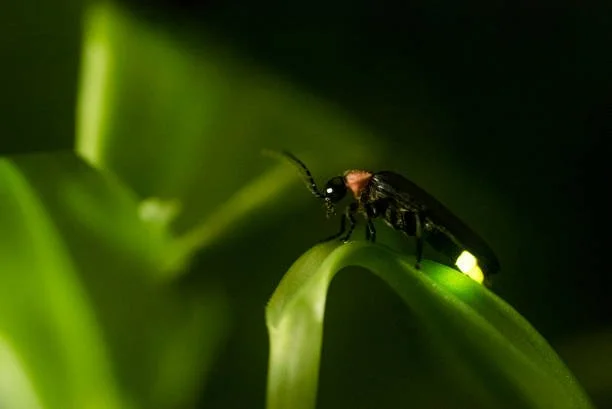Into the Woods with Curio: Fireflies
Beacon Bible Camp
“Neither do men light a lamp, and put it under the bushel, but on the stand; and it shineth unto all that are in the house.” Matt. 5:15
It only happens a few nights each summer. That’s when a marshy area, such as along the Beach trail at camp, or a wet meadow such as Beacon’s old soccer field, come alive with the ethereal light of fireflies.
A steady blinking of light on the other side of a low, wet area gives one away. Its soft light blinks on and off for a few seconds, then is gone. Another starts from the nearby bushes, blinking on and off, on and off, then disappears, only to reappear further away. Gradually more and more fireflies start blinking from different locations. Most move giddily through the air, their soft glowing lights turning on then off, keeping you guessing where they will appear next, while others remain stationary near the ground.
Fireflies, or lightning bugs as they are also called, are a type of beetle that produces bioluminescence, that is, their own light. Only a few living things, such as certain algae and deep-sea fish, own this trait. Entomologists, (scientists that study bugs) have been intrigued by the cold light of fireflies for a long time, and have discovered that fireflies produce light in special organs in their abdomens by combining a chemical called luciferin, enzymes called luciferases, oxygen and the fuel for cellular work, ATP. Entomologists think they control their flashing by regulating how much oxygen goes to their light-producing organs.
That’s the how. Why they do it is simple enough – it is to attract a mate. After spending most of the previous year as a larva in the leaf litter eating earthworms and other grubs, then pupating underground for the winter, the fireflies emerge in early to mid-June and start looking for a mate. In most firefly species only the males can fly, while the females remain on the ground or climb up in the grass or into other low vegetation. When the female sees the light of a male of the same species fly by, she signals with her light. They keep signalling each other until they can get together and mate. Remember, this is happening in the dark!
June is the first display of fireflies, and is usually the most prolific. Another more modest display at the end of August is from the offspring from this time. These August fireflies go through the same ritual, in order to produce still another generation, which will be the one to overwinter and give the same kind of display next June.
The repetition of this event does nothing to take away from its charm.
Why has God done this? All of the practical reasons are mentioned above, but the end result is still an amazing light show, (with no noise or fire hazard). It’s a wonderfully pleasing display of God’s amazing love in Creation.
